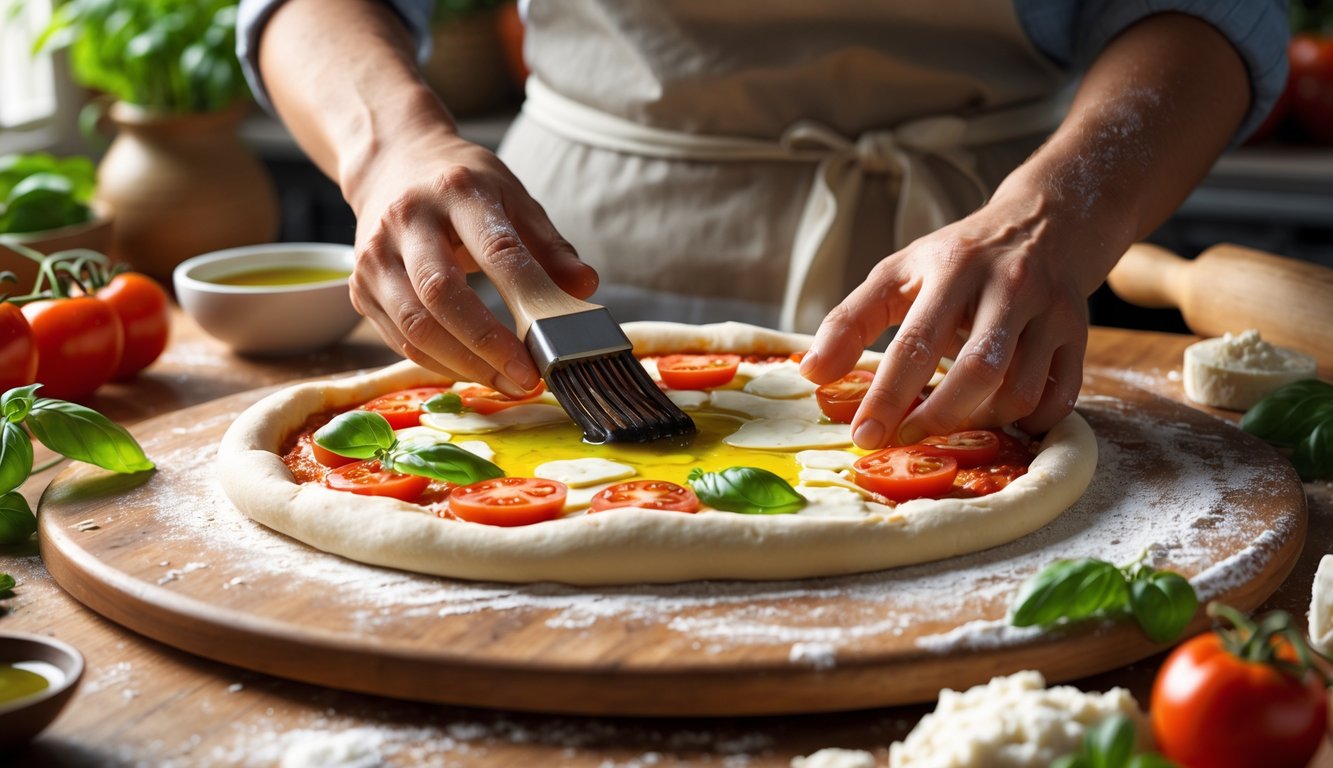
Understanding Pizza Dough Fundamentals
I’ve swapped flour brands thinking it wouldn’t matter—total lie. The tiniest things, like how humid it is or some bargain yeast, can wreck the crust before you even know what went wrong. Most of my kitchen fails? Just me ignoring the boring details everyone skips.
Choosing the Right Flour
I once used generic all-purpose and prayed for Neapolitan magic. Nope. “Use 00 flour for a finer crumb and snap,” says Culinary Bite, but my nephew’s convinced bread flour is the answer. Watched a New York pro toss bread flour dough—he claimed the 12-14% gluten is key for that stretch. Not wrong, but my dough got weirdly tough when I overdid it.
Bought some “fancy” European flour once—same recipe, totally different chew. Saw a chart somewhere comparing protein levels, but then the weather changed and everything got sticky again. Honestly, flour is the only place I sometimes get lucky.
The Role of Yeast and Fermentation
Tried skipping the rest time once—what a joke. The pros all say yeast type matters (active dry, instant, wild starter), but really, it’s about letting the dough sit long enough to develop flavor. My best batch? Left in the fridge for a day. Apparently, slow fermentation gives you those caramel notes and big air pockets. Yeast eats sugar, makes gas and acid, blah blah—whatever, it works.
Old yeast from the back of the pantry? Disaster. Most of my failures are from ignoring fermentation or using dead yeast, which Prep A Pizza says is classic rookie stuff. Gluten changes while you wait. Shortcuts never work, but I still try them sometimes.
Balancing Moisture Content
I’ve dumped in too much water thinking, “I’ll fix it later.” Lies. High hydration (65-70%) makes those bubbly crusts, but the dough is a nightmare to handle if you miss a knead or two. Sometimes I chase pro hydration numbers and end up with a sticky mess. A friend swears by under 60%—easy to shape, but too dense for me.
Adding olive oil isn’t exactly “authentic,” but it does make things softer and a bit richer. Maybe at the cost of that classic snap, though. Moisture shifts with the weather, the flour, or just my lazy measuring. Honestly, the “ideal” is whatever works in your kitchen, not what some recipe says. Most of my “failures” still get eaten, so maybe it’s not a total loss.
Mastering the Art of Kneading and Proofing
Half the time I mess up, it’s because I rush through kneading or just can’t be bothered to let the dough proof. My first tries were basically flatbread—chewy, dense, no stretch. Skipping those steps? Big regret.
Proper Kneading Techniques
Drives me nuts when people just poke at dough and claim it’s kneaded. It’s all about folding, pressing with your hands, turning, and repeating, and yeah, my arms get sore. But that’s how you get gluten webs that trap bubbles and give you a decent rise. There’s a graphic on flavorycooking.com that breaks it down: gather, press, turn.
Skip this and you get dense, crumbly crust. Sometimes the dough fights back and feels springy, which, according to guides, means it’s almost ready. Do the windowpane test (stretch until you can see light through it)—supposedly foolproof, though I still mess it up half the time.
How Long to Knead Your Dough
Everyone says “ten minutes,” but honestly, who’s counting? Gluten doesn’t care about your timer. Some doughs are ready in eight minutes, others take forever; humidity ruins everything. The feel matters more than the clock—dough should go from shaggy and sticky to smooth and elastic. Otherwise, pizza disaster.
I’ll set a timer, then ignore it, because poking the dough tells me more than any stopwatch. If it springs back, maybe it’s ready. If it tears or feels dry, you messed up hydration or kneading. Don’t overdo it either—after a point, you’re just making it tough. The pros at thehearthsidehaven.com say it’s all about feel, not time, and letting it proof until just doubled (not more) is what actually makes the crust rise. Or so they claim. I’m still figuring it out.
Perfecting Your Pizza Crust
Can we talk about pizza crust for a second? I’ve burned through so many recipes, read so many “secret” tips, and yet, the crust just keeps laughing at me. Sometimes it’s floppy, sometimes it’s bland, sometimes it’s just a sad, pale circle sitting there like a failed science project. I get it, technique matters more than some overpriced pizza stone, but why does everything go sideways if I miss one step? Forget to check the dough? It balloons up and collapses like a bad soufflé. Too much moisture? Suddenly I’m eating bread soup. Where’s the magic button for this?
Achieving a Crispy Crust
Oh, the flour debates. People act like Tipo 00 is a lottery ticket, but honestly, hydration is the thing that keeps tripping me up. I keep hearing 60–65% is the pro zone—Una Pizza Napoletana folks basically tattoo that ratio on their forearms. Anthony Mangieri, pizza legend, always says, “Never cheat the dough.” I try, I fail, I try again. Oven heat, though, is where I get stubborn. My oven barely hits 500°F, and that’s if I ignore the smoke alarm. Preheating a pizza steel for an hour? Feels like overkill, but it’s the only way I’ve ever gotten anything close to a real crunch. Par-baking sounded like a joke until I tried it—half-bake the base, then add toppings. I swear it’s the only reason I didn’t serve everyone a soggy mess last week (thanks, phone call, for ruining my timer). I read this page and got lost in tool recommendations and fermentation rants. Maybe next time I’ll wedge a random brick under the steel, just to see what happens.



